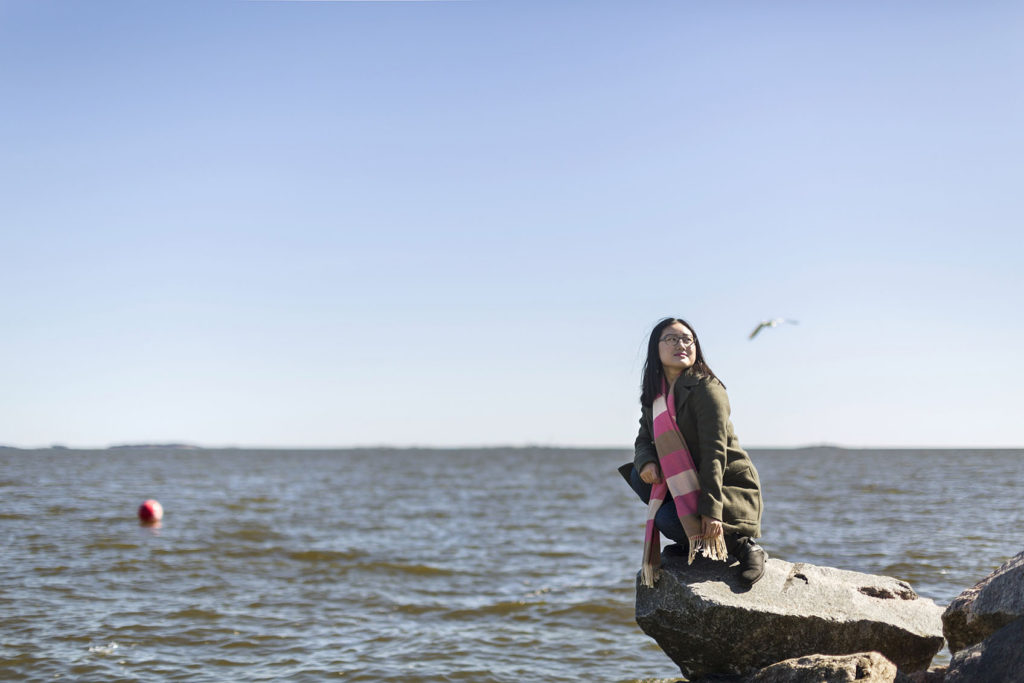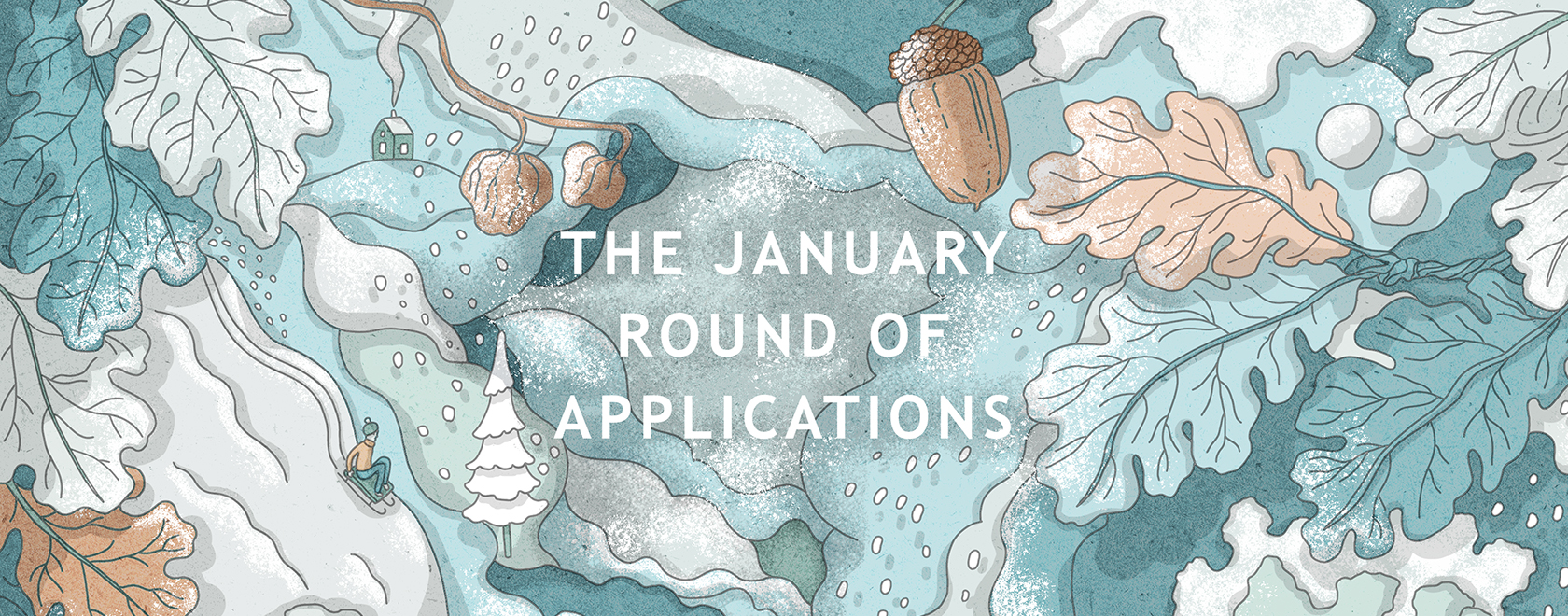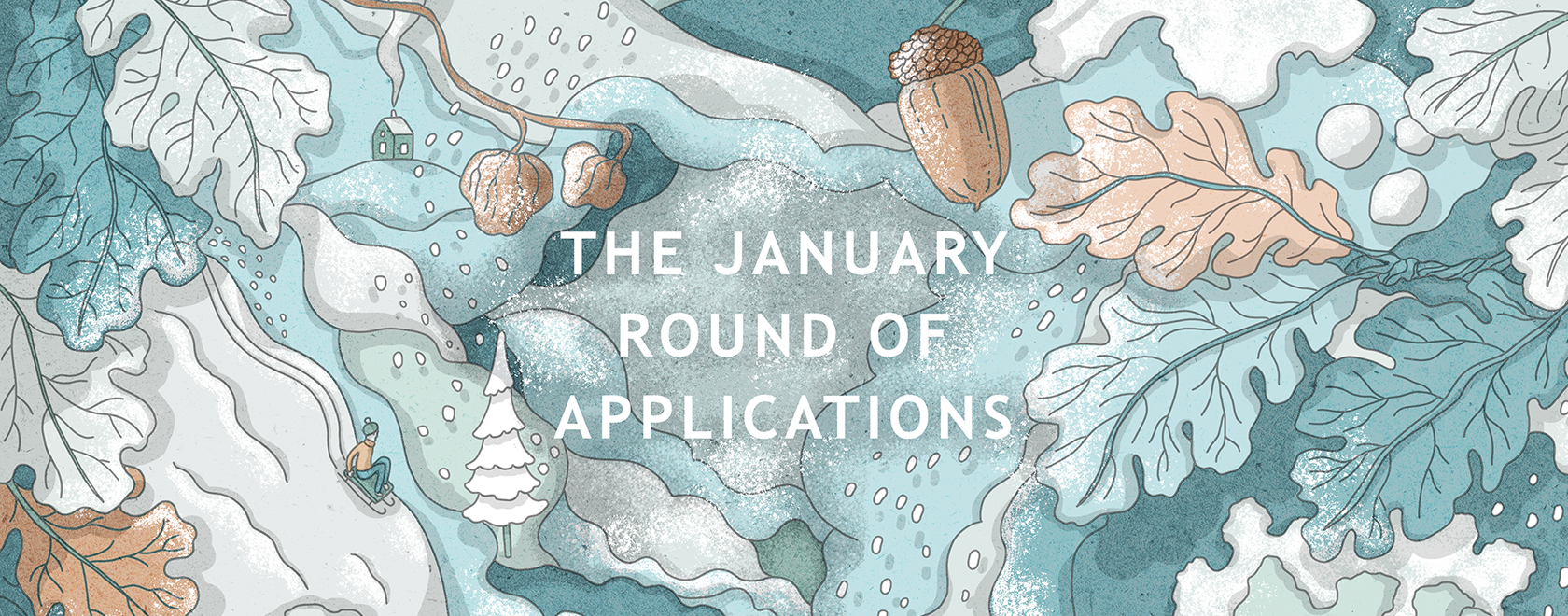
Yan Sun is studying new fascinating ways of using microalgae in the bioremediation of oil pollution.
When Yan Sun, a doctoral student in environmental sciences, is fishing at Lake Vesijärvi in Lahti during her leisure time, she prepares the catch in Chinese style.
“The internal organs, especially the swim bladder, are the most delicious part. My Finnish friends are horrified by this and claim that you cannot eat the whole fish,” Yan says.
She assures us that the water in the Lake Vesijärvi is now amazingly clean and that in some places, even drinkable. In fact, the cleanliness of water is close to her heart. In her dissertation research, Yan Sun is examining how to make the bioremediation of oil pollution in bottom sediments more effective by relying on microalgae.
Microalgae comprise a large variety of floating algae and other photosynthesising organisms, most of which are unicellular. Using them in the bioremediation of oil and other pollution has been studied for decades. However, the research method has been quite straightforward: the microalgae absorb oil and also degrade it as they grow.
In her research, Yan presents a new logic for using microalgae. Their main task is no longer to absorb oil, but to produce oxygen.
“Most microorganisms that are good at degrading oil can only survive in oxygenous environments. However, bottom sediments are often anoxic, which means that oil degrades very slowly,” Yan explains.
When microalgae are added to the bottom sediments, their main task is to be there and by being there they convert an anoxic environment into an oxygenous environment.
“By supporting microalgae, we will strengthen the natural oil degradation mechanism. This method is very environmentally friendly.”
This creates a beneficial self-perpetuating circle: the microalgae are photosynthesising organisms, which means that they use solar energy to convert carbon dioxide and water into sugar and oxygen. After this, aerobic microorganisms (microbes that base their metabolism on oxygen) absorb and degrade large amounts of oil and release carbon dioxide into the water. Microalgae will then convert this carbon dioxide back into oxygen in the photosynthesis process.
“By supporting microalgae, we will strengthen the natural oil degradation mechanism. This method is very environmentally friendly. You do not need to add chemicals to water that may be toxic to some species, or organisms that may cause chaos in the ecosystem in one way or another.”
Yan points out that microalgae-based bioremediation is also an excellent method from the perspective of the climate change.
“In photosynthesis, microalgae reduce the atmospheric release of carbon dioxide generated in oil biodegradation and they also absorb carbon dioxide from the atmosphere as they grow.”
Yan points out that even the best biodegrading organisms are quite slow at decomposing complex oil molecules. In an ideal situation, the oil will degrade completely into carbon dioxide. However, in most cases, the degradation will produce a slightly lighter and (usually) less toxic chemical.
Another factor hampering the use of microalgae in bottom sediments is that photosynthesis requires sunlight, which is, however, absent in the bottom mud of polluted sea areas.
Yan is planning new ways of improving the access of sunlight to the bottom of seas and lakes.
In fact, as part of her dissertation research, Yan is planning new ways of improving the access of sunlight to the bottom of seas and lakes. She cannot, however, disclose the details of the mechanism, because there are plans to apply for a patent for the idea.
Yan spent some time as an exchange student at the Tampere University of Technology in 2010 as she was studying for a bachelor’s degree in environmental sciences at the Guangzhou University. Two years later, she moved to Lahti to study for a master’s degree.
“I had already calculated the results in my head, when the Finnish students were still working on the exercises with their pocket calculators.” According to Yan, in China, mathematics is studied much more intensively at the upper level of comprehensive school and at upper secondary level than in Finland.
However, at university level, the situation is the opposite. For a mathematically gifted student like Yan, taking the bachelor’s degree in China was easy. Everything took place in the classroom: students only needed to read textbooks, because they contained all the knowledge, and to do calculation exercises.
“In Finland, I had to start doing things myself. It was a shock. I had to prepare projects, find scientific articles and read them, and write lots of text. It took a long time before I got used to this system. However, in the end I did.”
Yan has particularly fond memories of the laboratory course during her master’s studies. Students collected soil, water and snow samples in a city, suburb and a rural area and compared the amount of pollutants in different locations.
“The professor in charge of the course published an article based on the research carried out by the students. In courses like this, China lags well behind Finland.”
Text: Antti Kivimäki
Photos: Pekka Hannila


